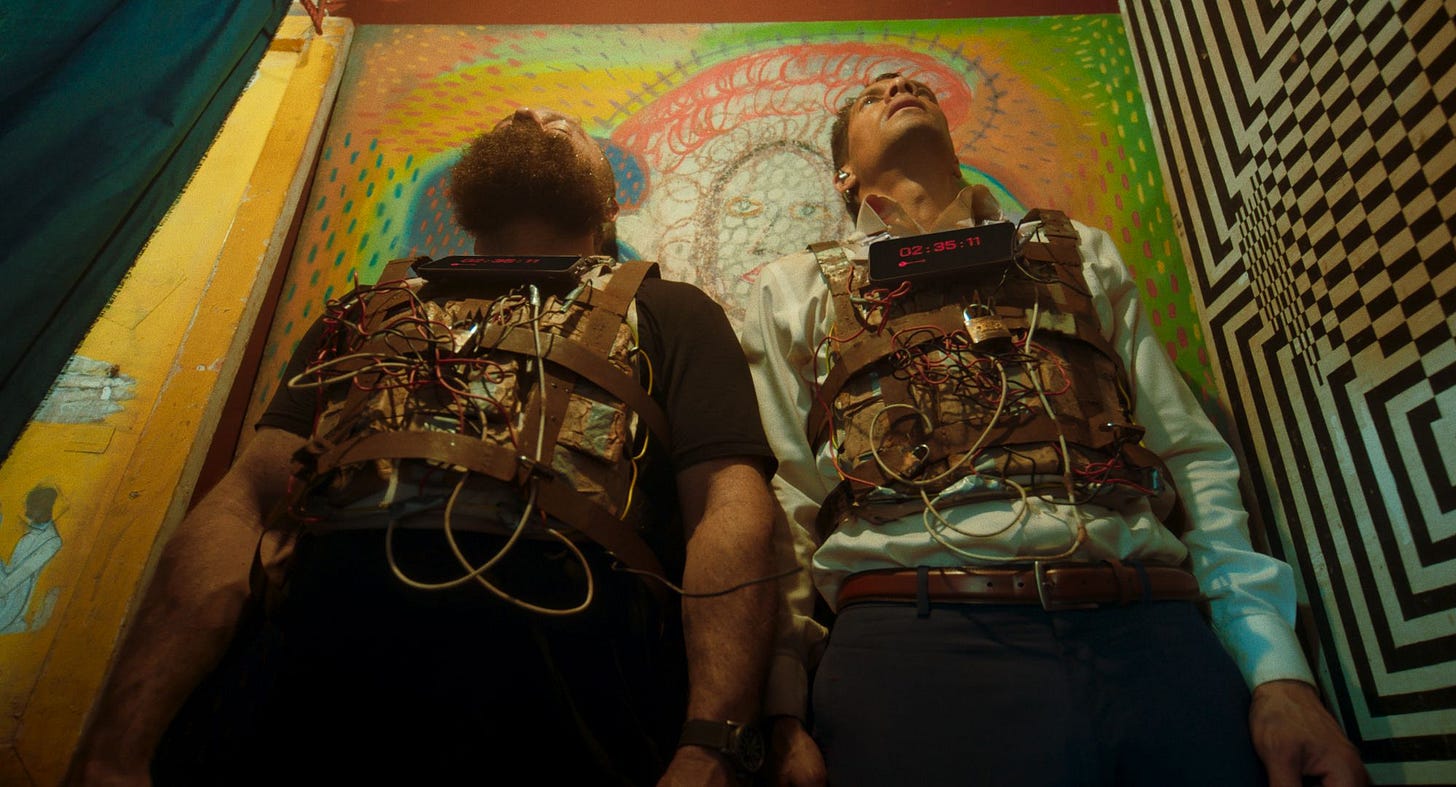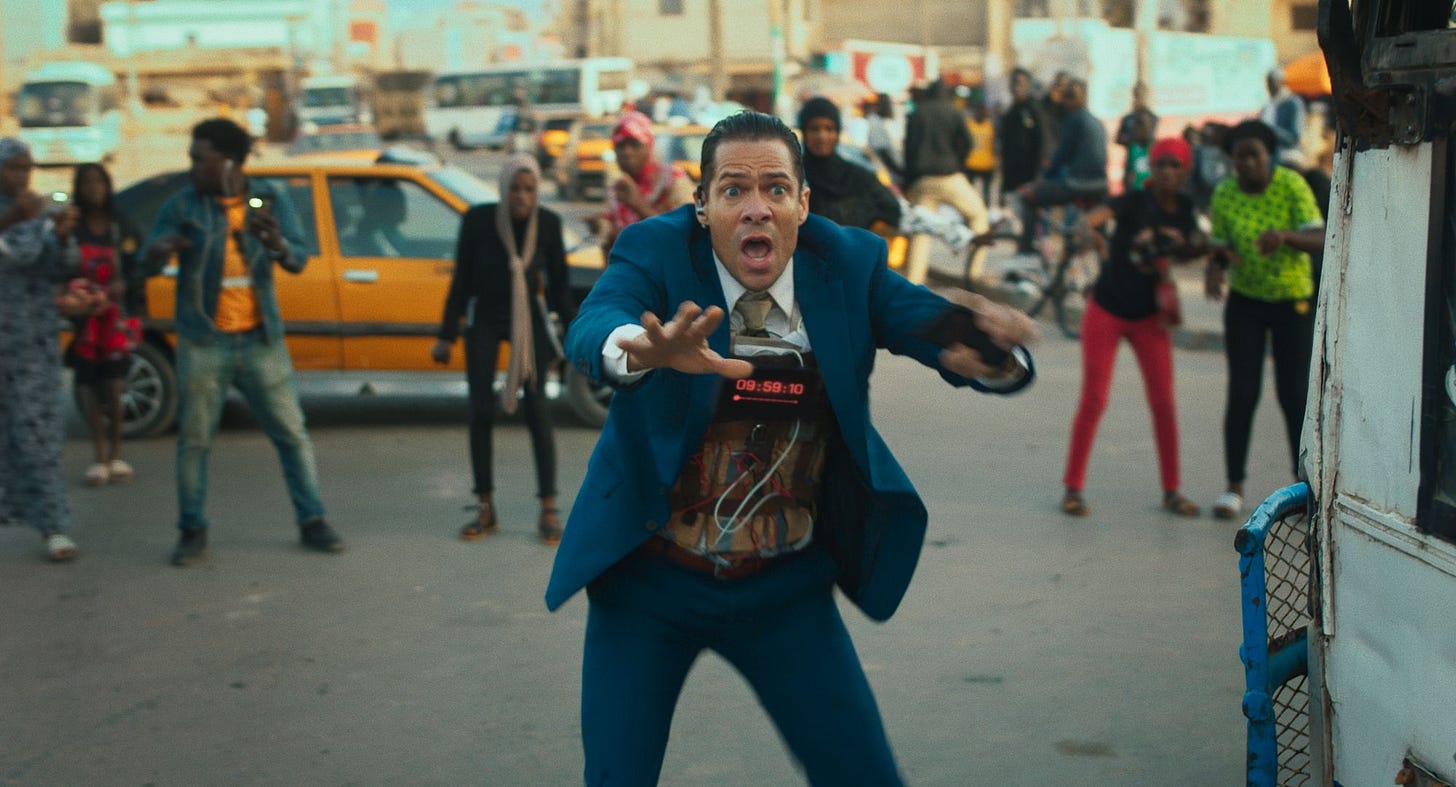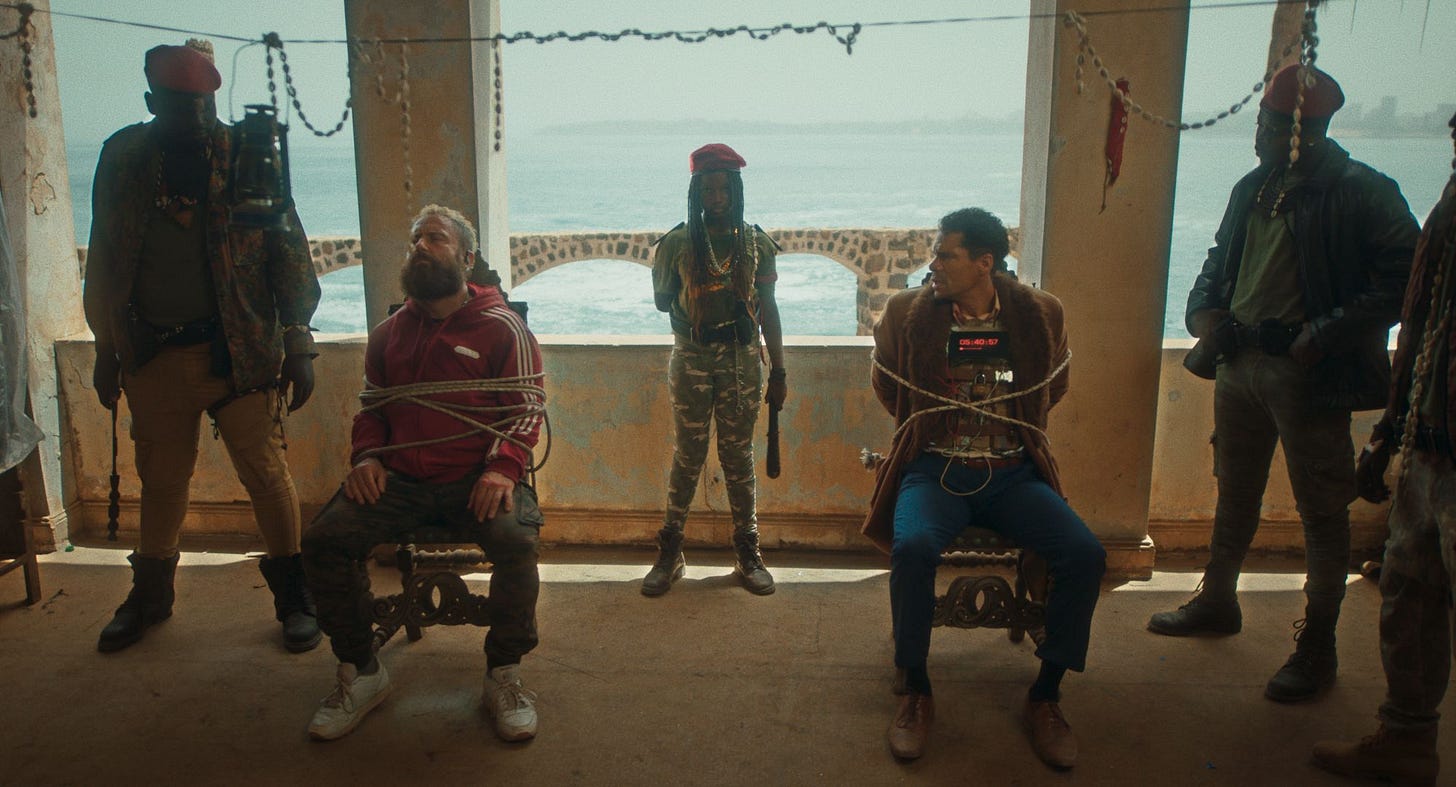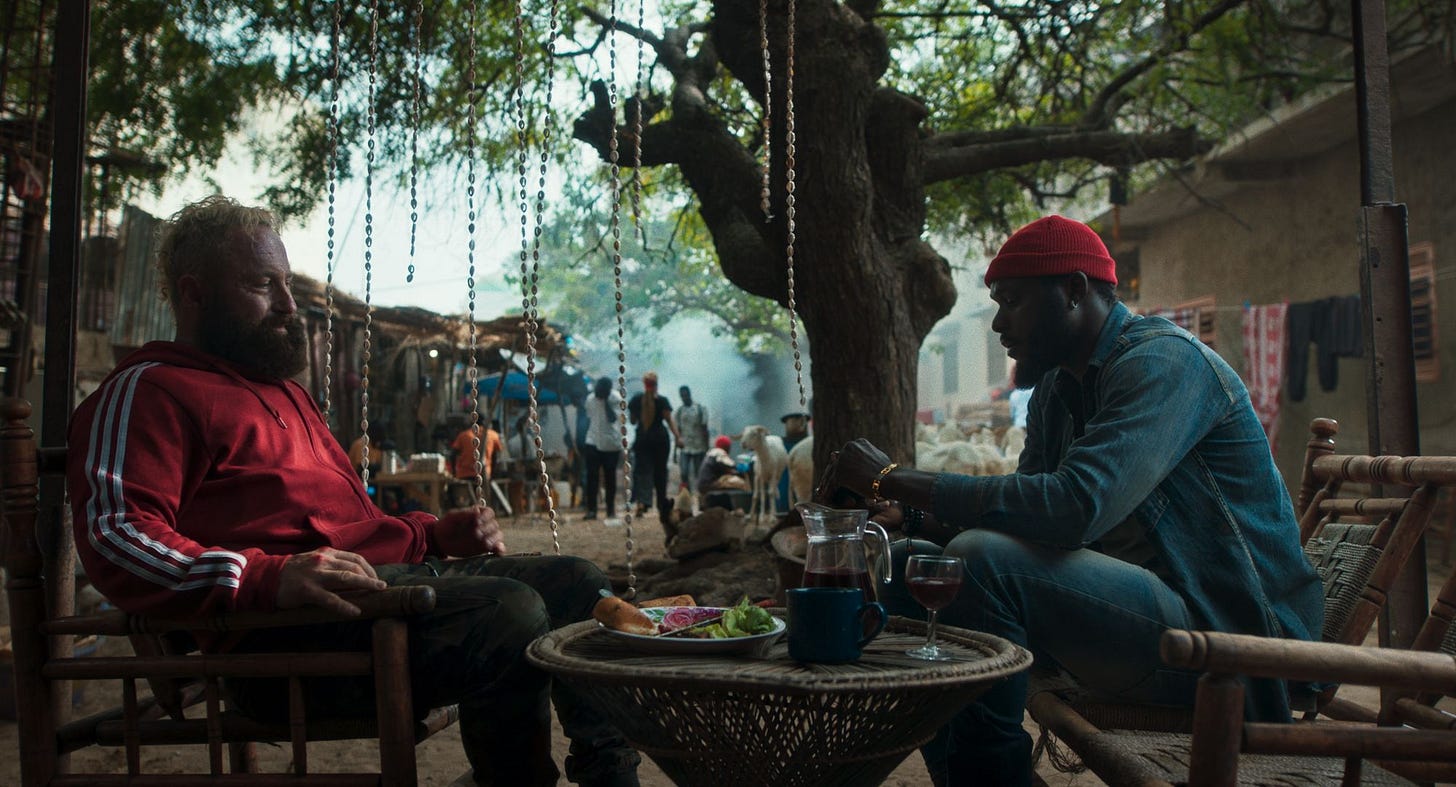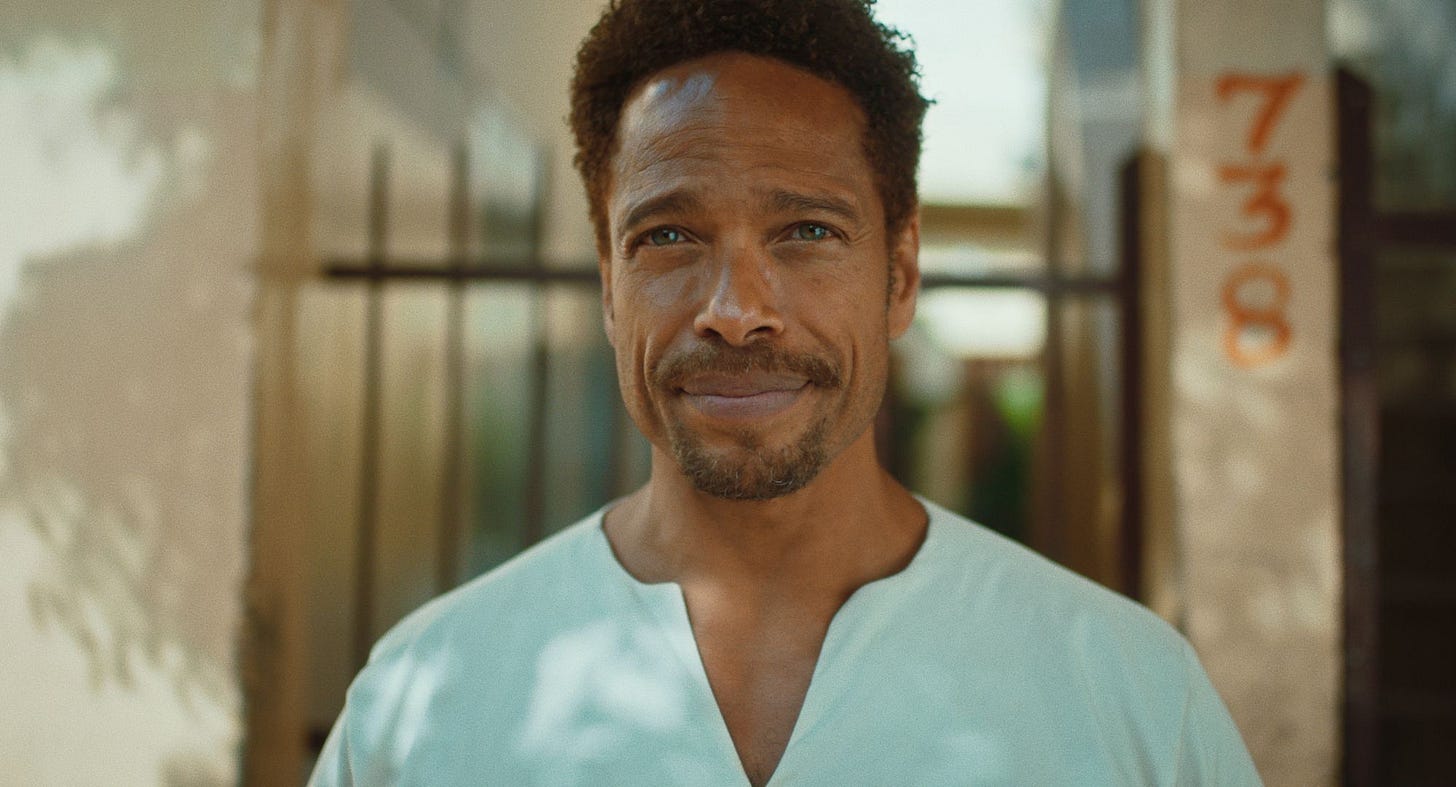Zero Review: Kill 'Em Dafoe!
This movie does for foreign policy what Saw VI did for HMOs
When a fellow wakes up in a strange location locked into a bomb vest, perhaps the only scarier voice to immediately hear on the phone besides Tobin Bell's is that of Willem Dafoe. Such is the plight of “One” (Hus Miller), an American businessman who snaps into consciousness on a bus in Dakar, Senegal. He was supposed to be taken to a nice hotel – instead, he's surrounded by strangers panicked by the fact that he's decked out like a suicide bomber. Realizing more slowly than he ought that he needs to pop in the earpiece and activate the phone he's been given by a complete stranger, he hears that familiar, sinister, Wisconsin-New York hybrid accented voice. It tells him to complete five missions within the time displayed on his chest countdown timer, or boom goes the dynamite.
As a premise, this has obvious antecedents: Zero is most immediately reminiscent of Saw and the John Cena vehicle 12 Rounds. Franco-Congolese director Jean Luc Herbulot also seems to be a fan of Crank, as his vivid colors, quick cuts, and hyperactive drone shots seem inspired by that sort of pace. By contrast, though, what actually transpires on screen isn't a high-intensity action film, even as it's lensed like one, by his regular DP Gregory Turbellier. Lead actors Miller and Cam McHarg (who plays “Two,” another bomb-strapped pawn) aren't exactly Jason Statham, though McHarg gets in some good punches every now and then. In real life both are filmmakers; as actors, they feel appropriately unfamiliar for a film that only spoonfeeds the information we absolutely need to know.
One is our point of entry character, though we don't even know exactly why he's in Senegal until late in the story. Two shows up after his story has already been put into motion; a flashback to his previous life only raises more questions than it answers. It's clear that Herbulot and Hus, who cowrote, have worked out a backstory, but they don't feel the need to reveal all of it. Even Dafoe's character maintains a degree of mystery: is he CIA? A supervillain? A tech-savvy character pointedly tells us it could be anybody, using the same sort of voice-disguise technology, apparently akin to the sort that every Ghostface character in Scream has. Though Zero has the premise of an action or horror film, its true appeal is as a mystery – what is happening here, and why?
Actually shot on location in Dakar, Zero takes advantage of what have to be much looser laws regarding shooting permits and likeness waivers. It's possible stock footage has been integrated, but at least some of the crowd scenes show our principals running past large crowds in busy city streets. Dafoe's character uses a drone, and so does Herbulot, giving us vast cityscapes, only some of which are digitally augmented. Colors are saturated and bright throughout, with high-contrast outlines, conveying a rich vibrant culture, despite omnipresent poverty. You just know an American director would have busted out the yellow and brown filters to make it look horribly hot. (Actual desert dwellers know the mercury gets highest when the sky is bluest.)
The poverty provides the overarching theme here. Just as Saw VI took on America's messed-up health care system via the Jigsaw Killer, Zero takes on American foreign policy and its overseas consequences. Another reason we don't know much about One and Two, it turns out, is that they serve as allegories – business negotiator One represents commerce, and violent, short-fused Two represents force and power. Both are the weapons of the United States, but this time, the tables are turned – the Americans find themselves turned into de facto suicide bombers in a Muslim country. As the manipulations of the voice on the phone continue to make them look like terrorists, they have to be reminded that their actual guilt or innocence doesn't matter; just the perception of it. Considering the current administration's extreme stereotyping of anybody who looks different, the movie's not wrong on that score.
Saw fans have learned to roll with this sort of thing, but at a certain point you do wonder why and how Dafoe's character has rigged up and prepared so many props and separate games just to make somebody else do the dirty work, when with just one more step he could have probably achieved his goals himself. It's explained in movie terms, but especially when you see just how stupid real-world politics is now, the plot feels excessively elaborate, and full of any number of dubious variables. Since it's an allegory, though, you can go with it as a metaphor for the whole world being rigged against certain people. Or just buy that the villain is so smart he can literally predict everything.
Dafoe proves to be well worth whatever they paid him – even though he never met the director, and literally phoned in his performance, he did not do so figuratively. It's all the more impressive when you realize he never interacted with anyone on the set, and probably recorded the whole thing in a couple of days. Though you never actually see him, he is ironically the main reason to see the movie. The other acting MVP is CSI's Gary Dourdan, playing a character who shows up in the third act in portentous Malcolm X glasses, to provide what seems to be a welcome friendly face after everything our protagonists have been through.
If I find myself wishing for more action violence, am I guilty of the same impulses as those the U.S. has on the world stage? Am I meant to think that way? Maybe. If the sequel teased at the end means we get more, am I in? Absolutely. It may not be what you think at first, but by the end, Zero is a gripping race against time and near-certain doom, conclusive in its arc but leaving room for more story to be told if enough people want it. And since the crappy global situation moves on whether we want it to or not, one imagines Herbulot will keep finding things to say about it.
Zero opens today in theaters and on VOD. All images courtesy of Well Go USA.
Prefer not to subscribe via Substack? You can leave a tip through Buy Me a Coffee instead.



